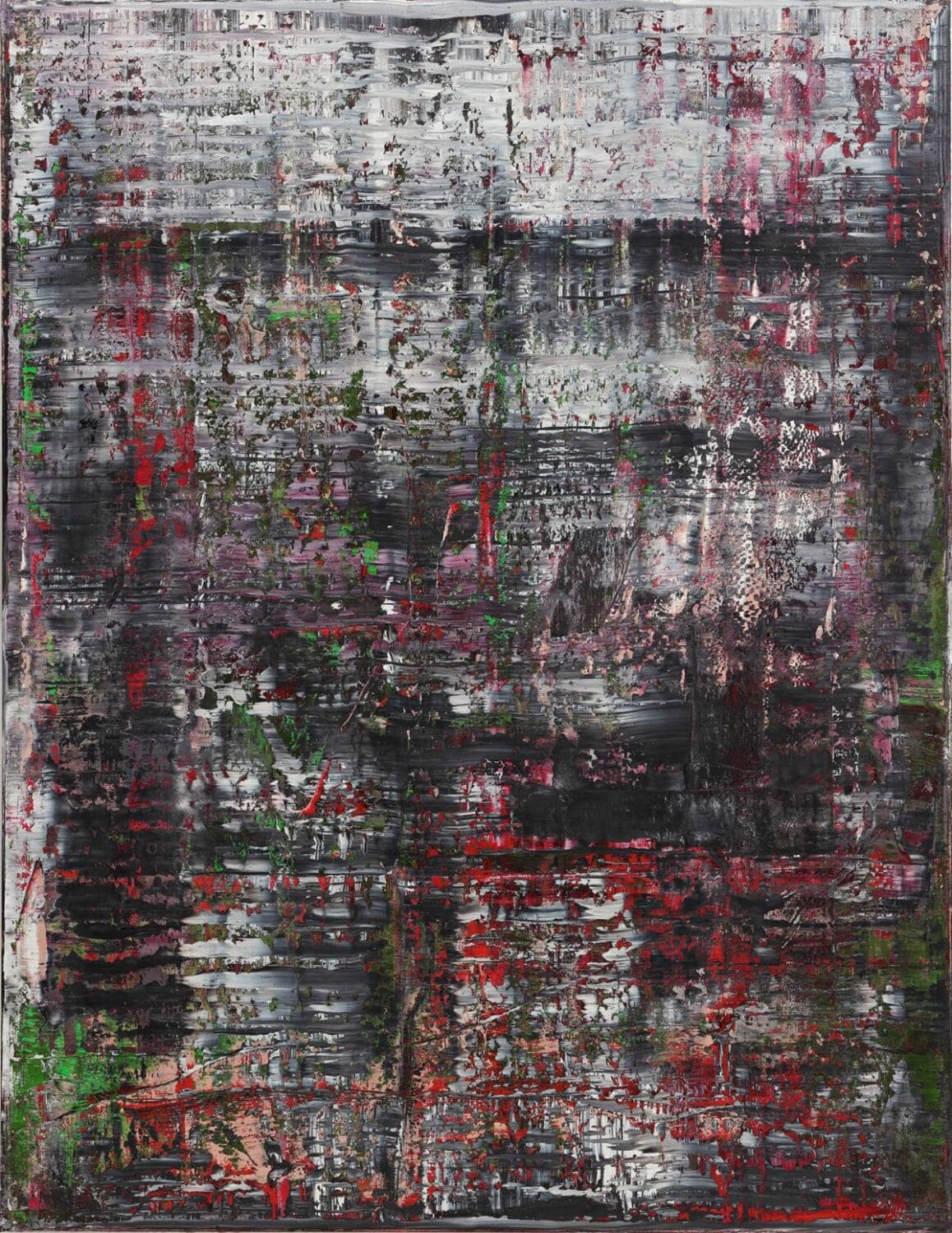Gerhard Richter’s landmark Birkenau series, a group of four paintings created by the renowned German artist in 2014, are now on view at The Met Fifth Avenue. The Birkenau paintings were first shown in the United States in the short-lived but critically acclaimed exhibition at The Met Breuer Gerhard Richter: Painting After All, which closed early on March 12 due to the COVID-19 crisis. On view until January 18, 2021, the new installation in The Met Fifth Avenue’s Lehman Wing will include an earlier work by Richter, Mirror, Blood Red (1991), on reflective glass, in addition to the source photographs for the Birkenau paintings.
“Given that our major and widely anticipated Gerhard Richter show could only be seen for nine days before we had to close, it is so important that we are able to present Richter’s seminal Birkenau paintings to a broader New York audience,” commented Max Hollein, Director of The Met. “These works are extraordinary in the way they both challenge and underscore painting’s ability to serve as a means of remembrance, reflection, and memorializing.” “In enabling this display of the Birkenau paintings that unfortunately were not able to be widely seen by the public, The Met has made a unique accommodation in acknowledging Richter’s profound reckoning with the horror of genocide under Nazism and its relevance to contemporary history,” said Sheena Wagstaff, Leonard A. Lauder Chairman, Modern and Contemporary Art at The Met. The creation of the Birkenau paintings came out of the artist’s encounter with the only known photographs taken by prisoners inside the Auschwitz Birkenau Nazi concentration camp. The works speak to Richter’s belief in painting as a powerful means to address the complex and difficult legacies of both personal and civic history. This long-standing concern can be traced back to some of the artist’s earliest works from the 1960s; in the Birkenau series, made over 50 years later, Richter confronts the question of how-or indeed whether-painting is able to address the atrocities of the Holocaust. After initially sketching out the photos on individual canvases, he gradually painted them over to produce heavily disturbed, ruptured surfaces. This veiling holds in tension the complex relationship of history and memory with the forces of destruction and reconstruction, and abstraction and representation.
Credits
Gerhard Richter: The Birkenau Paintings is curated by Sheena Wagstaff, Leonard A. Lauder Chairman, Modern and Contemporary Art, and Brinda Kumar, Assistant Curator, Modern and Contemporary Art. Special thanks to Dita Amory, Curator in Charge, Lehman Collection. Gerhard Richter: Painting After All, which was on view at The Met Breuer through March 12, was made possible by the Barrie A. and Deedee Wigmore Foundation. Corporate sponsorship was provided by Morgan Stanley. Major support was provided by David S. Winter and the Modern and Contemporary Art Visiting Committee. Additional funding was provided by Angela A. Chao and Jim Breyer, Jane C. Carroll, the Horace W. Goldsmith Foundation, Kenneth and Rosalind Landis, and the Peterson Family Foundation. The exhibition was supported by an indemnity from the Federal Council on the Arts and the Humanities. The catalogue was made possible by the Mary C. and James W. Fosburgh Publications Fund. Additional support was provided by Christie’s, and by Sharon Wee and Tracy Fu.
